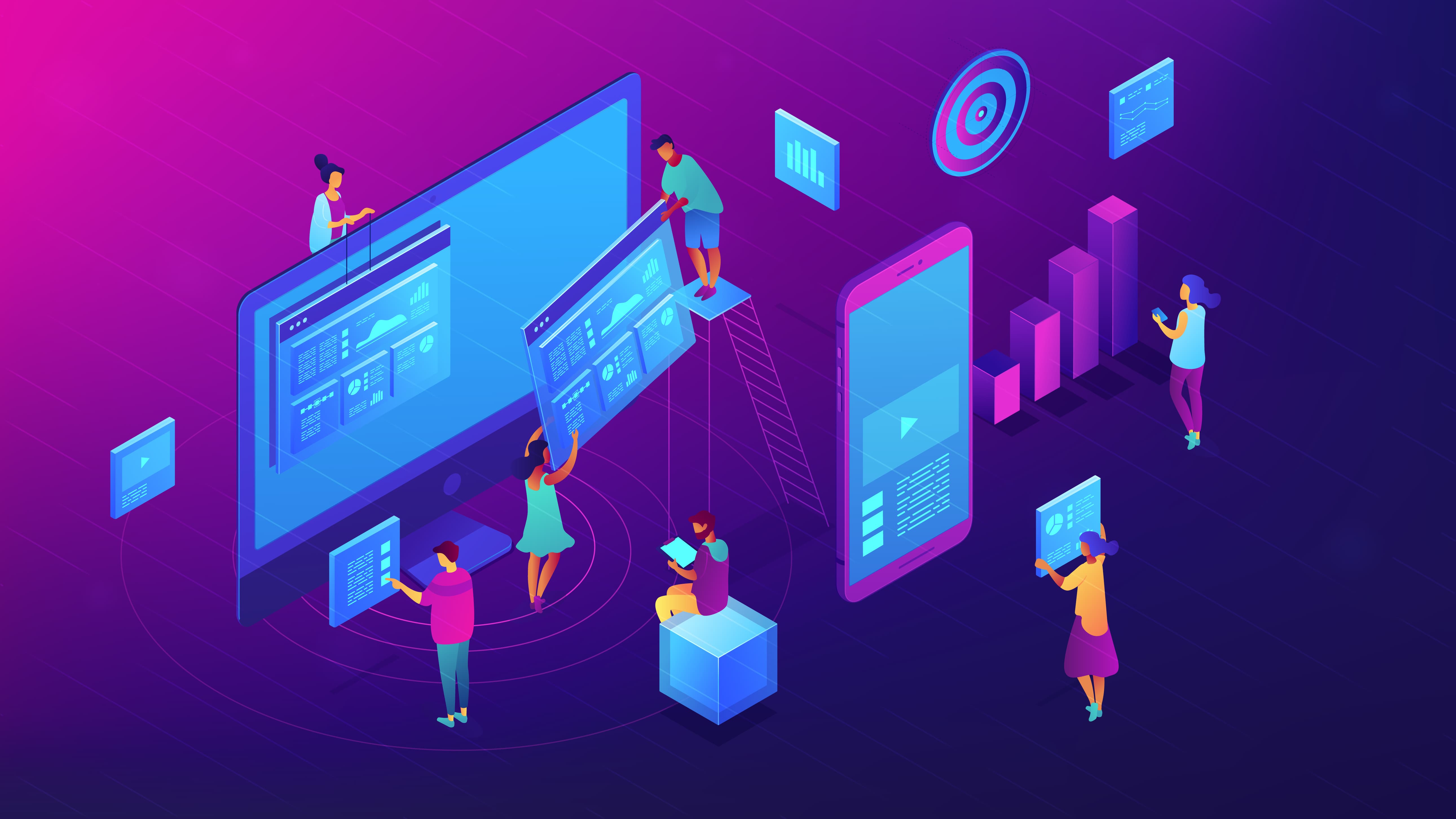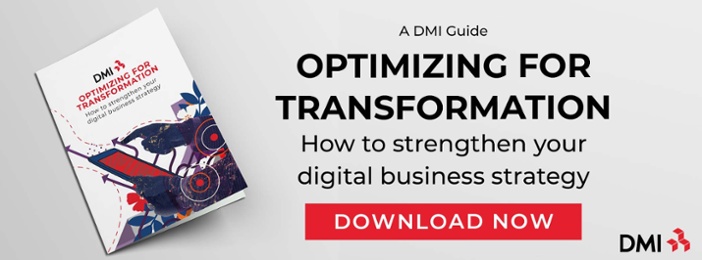
Digital Optimization: The Foundation for the Intelligent Enterprise
While most companies have adopted a digital-first business strategy or plan to do so, making a full-scale digital transformation is very much a work in progress. 62% of the companies that undertake digital transformation report being stalled in their transformation process.
Truly transforming your organization means not only replacing outdated infrastructure, systems, processes and apps but also creating a culture that will support the transformation Many companies find it cost-prohibitive or too disruptive to handle all this digital adoption and expansion at once.
That doesn’t mean an intelligent transformation process shouldn’t continue. At the same time, however, companies must focus on optimization as a crucial first step towards creating a foundation for their digital business strategy.
What Is Digital Optimization?
Digital optimization is the practice of improving your current digital business strategy to enhance customer experience and productivity. It focuses on ensuring that the technology that exists has the capability and scalability needed to provide a foundation for growth and agility in the future.
Digital optimization includes embracing cloud infrastructure to leverage apps, APIs and containers and allow secure remote access. It means application development using agile, DevOps, and low-code / no-code methods for rapid gains. Digital optimization also includes migrating to SaaS platforms and virtualization.
Included under the digital optimization umbrella, you will also find other services such as:
- Cybersecurity
- Managed mobility services
- eCommerce optimization
- Analytics
- Automation
Digital transformation can be a long journey — but that doesn’t mean you need to wait until it’s complete to gain the benefits. Optimizing your current digital business strategy as part of your ultimate transformation plan yields results now. That’s why 85% of CIOs say they are currently taking proactive steps to optimize their digital business strategy, according to Gartner, and 83% said demand for new digital products and services will increase in 2021.
The Digital Business Optimization Process
The goal of digital business optimization is to improve and optimize processes and areas of the workforce, customer engagement and profitability throughout an organization.
Typically, businesses focused on optimization look at five key areas:
- Revenue generation
- Operations
- Workforce productivity
- Customer experience
- Asset utilization
Let’s take a closer look at each of these.
Revenue Generation
It’s a common misconception that a company can only increase revenue by transforming its current business model. But, as we established, digital transformation comes with its own risks. Digital optimization, on the other hand, makes use of existing technologies to boost revenue.
Retailers, for example, can leverage existing data to more closely analyze user behavior. This analysis yields both business insights and anecdotal experiences that then put behavior in context. By leveraging these insights, companies can take a human-first approach to eCommerce optimization and make strategic decisions that drive customer satisfaction and revenue.
Analytics, along machine learning and predictive modeling, can also be used to streamline supply chains, thereby optimizing sales forecasting and revenue generation.
Operating Expenses
Automation refers to the replacement of manual or paper-based processes with digital tools. This process can significantly reduce operating costs up to by anywhere from 25% to 40% on average — all without overturning the existing business model.
Chances are your business already has an automation tool in its tech stack. Any centralized platform that integrates business systems and controls can likely be used to automate and streamline workflows if configured correctly.
Marketing automation, for instance, is available in most CRM platforms out of the box. This tool keeps the sales pipeline full and ensures leads are routinely followed up on and don’t go cold. Likewise, automation reduces customer acquisition costs by optimizing the company’s use of sales and marketing channels.
Workforce Productivity
In addition to minimizing operating expenses, digital optimization involves helping businesses increase volume and productivity without adding staff. Team members can let automation handle previously manual business processes, freeing them up to focus on higher-level priorities and high-value clients. Likewise, they can leverage analytics for more strategic decision-making.
Digital optimization also means providing remote workers the tools they need to operate seamlessly, whether in the office or at home. Managed mobility services (MMS), in particular when outsourced, helps enterprises identify ways to optimize services, security, productivity, device management, and, of course, costs while balancing an ever-changing device landscape.
Customer Experience
Today’s digital business strategy revolves around providing the best user experience possible. In fact, two-thirds of companies today are competing primarily on customer experience.
A human-first approach to digital optimization ensures that the existing business models are tailored to how people use technology — rather than to the technology itself. In turn, this approach yields better customer experiences.
For example, using both data and anecdotal experiences to analyze the entire buyer’s journey provides deep insights into how consumers interact with your brand. This contextual information can then be used to optimize your website or eCommerce platform based on what your customers actually want to see and how they want to engage your brand. . This strategy results in higher conversion and satisfaction than with a technology-first approach to digital optimization and transformation.
Asset Utilization
More efficient asset utilization is being achieved in various ways — from better analytics to assess risk; IoT monitoring to maximize equipment uptime and yield; to more efficient ways to manage inventory. Asset utilization can include services such as predictive maintenance, asset health monitoring and performance, or logistics optimization to maximize service delivery, improve asset uptime, enhance performance and eliminate unplanned downtime.
At its core, asset utilization is about understanding what tools and resources you already have, how they work and how to make better use of them. A digital optimization strategy achieves just that.
Intelligent Digital Business Optimization
Digital optimization enables organizations to make a timely change to their operations to stay competitive and leverage the technology available right now for sustainable growth. While planning long-term strategy, optimization lets companies improve processes today without having to go through massive disruption. Digital optimization can happen incrementally over time and should be continually reevaluated as you work towards digital transformation.
With proper planning — and the right strategic partner — you can create a technology roadmap that starts you on your journey to digital transformation while optimizing your existing business assets for digital right now. DMI combines technical expertise, business strategy, and a collaborative approach to drive business outcomes and enable our clients to become the digital leaders of tomorrow.. Unlike other tech firms, DMI works to solve business problems first and then designs the technology needed to achieve your goal.
At DMI, we believe in the convergence of people, technology, and data. When these components come together with intelligent digital business strategy, businesses can flourish and grow in a world that’s constantly evolving. We build the structure and technology you need to create sustainable growth.
Contact DMI today and let us show you how digital optimization can power your business.
